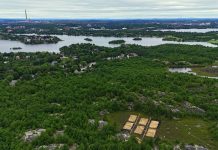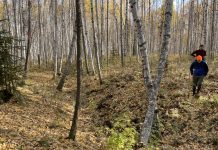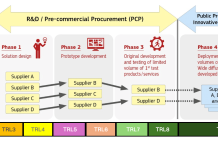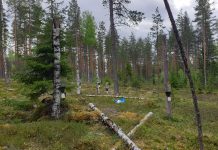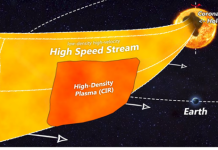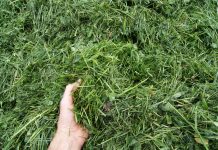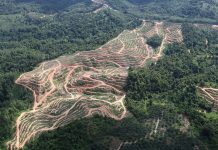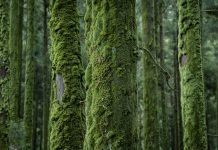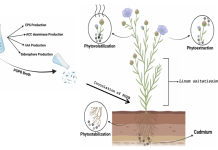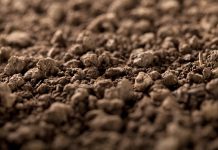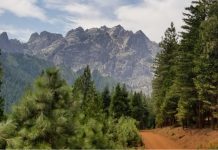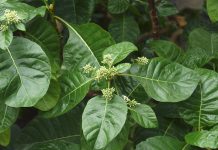Open Access Government produces compelling and informative news, publications, eBooks, and academic research articles for the public and private sector looking at health, diseases & conditions, workplace, research & innovation, digital transformation, government policy, environment, agriculture, energy, transport and more.
Home 2025
Archives
Sudbury peatland restoration from metal pollution
Professor Pete Whittington discusses efforts to restore metal-contaminated peatlands in Sudbury, Ontario, which were heavily affected by mining since the 1880s.
Cryptic ground ice conditions in permafrost and northern agricultural expansion
Permafrost conditions are often heterogeneous and concealed beneath the surface, becoming evident only when thawing occurs. Melissa Ward Jones discusses these challenges and highlights a new publication that identifies ice wedges for the first time in the Yukon-Kuskokwim Delta region of Alaska.
Knowledge tipping points: Co-creating rainforest futures
The article highlights the importance of envisioning multiple futures for human and rainforest coexistence. It emphasizes forest conviviality and knowledge co-creation, drawing insights from the PRODIGY research project, which shows that knowledge systems are essential for socioecological resilience.
How innovation procurement can boost European water resilience
As Europe faces rising water crises, PCP WISE brings innovation procurement to the forefront to develop smarter, scalable tools for real-time water management and climate resilience.
Priodiversity LIFE: Protecting biodiversity through restoration
Matti Koivula from the Natural Resources Institute Finland (Luke) discusses the advancement of forest restoration techniques in Northern European forests and explains how the Priodiversity LIFE project will enhance this knowledge base, address biodiversity loss, and contribute to EU restoration goals.
Pharmaceuticals and personal care products in wastewaters
Despite progress in wastewater treatment, PPCPs like medications and personal care products continue to enter ecosystems, threatening aquatic life. Since 2020, the Bow River Ecosystem Health Assessment project in Alberta, Canada, has been evaluating the impact of treated wastewater on the Bow River.
Understanding the role of botanicals in medicine
Dr Erin C. Berthold from Planted in Science Consulting LLC discusses the uses and perceptions of botanical medicines, emphasizing the necessity for coordinated global efforts to understand and regulate these substances to ensure their safe integration into healthcare.
Solar wind can provoke earthquakes: Possible magnetosphere-solid earth tornado
This article explores the potential influence of solar wind on earthquake occurrences, drawing on findings that show a correlation between strong earthquakes and geomagnetic storms, particularly in areas beneath the polar cusp during storm events.
Unlocking sustainable proteins: Clover grass and lucerne as a future food source
The world faces a dual challenge: reducing the environmental impact of food production while ensuring a sustainable supply of high-quality proteins. New membrane filtration method enables us to produce food-grade proteins free of green color, grassy taste and odor.
A comprehensive overview of the EU deforestation regulation
Dr Christopher Gilbert at Biena Consulting Srl offers a comprehensive overview of the EU Deforestation Regulation, which aims to reduce the European Union’s contribution to deforestation, thereby minimising greenhouse gas emissions and combating global biodiversity loss.
Breaking the grass ceiling: Gender inequality in agriculture
Professor Sally Shortall guides us through GRASS CEILING, which brings together 25 partners from across Europe to research gender inequality in agricultural and rural policies.
Rethinking urban greenery: A nature-based approach to biodiversity management
This article examines the urbanLIFEcircles project as an example for integrating biodiversity management into urban planning through nature-based solutions.
The importance of integrated forest management
Integrated forest management is a fundamental concept for the sustainable provision of demanded ecosystem services and the simultaneous promotion of biodiversity in our forests. Prof, Dr Andreas Rigling from Forest Ecology, Department of Environmental Systems Science, USYS – ETH Zurich, explains.
SoilTribes: Glocal ecosystems restoring soil values, roles and connectivity
This analysis explores how creativity, knowledge-sharing, and the empowerment of local communities can transform our understanding of soil value and protection, focusing on global and local ecosystems that restore soil’s values, roles, and connectivity.
Microalgae as a novel, non-animal source of long-chain omega-3 fatty acids and vitamin D
Charlotte Jacobsen and Emil Gundersen from the National Food Institute at the Technical University of Denmark emphasize the need for new plant-based sources of omega-3 fatty acids and vitamin D3, highlighting microalgae as a promising option and discussing the challenges in harnessing it.
Microbially-assisted phytoremediation of cadmium
Arpita Bose, PhD, Associate Professor and Nida Zainab, PhD Researcher at Washington University in St. Louis, guide us through the process of microbially-assisted phytoremediation of cadmium.
Soil biological amendments for soil health
Lynette Abbott and Bede Mickan from The University of Western Australia, provide insights into research on enhancing soil health using biological amendments.
The influence of rock type on conifer species’ nutrition and biomass partitioning
Mark Kimsey, Director of the Intermountain Forestry Cooperative, explains the influence of rock type on conifer species’ nutrition and biomass partitioning.
Impacts of land clearing on areas containing permafrost
Melissa Ward Jones from the University of Alaska Fairbanks explores the impacts of land clearing on areas with permafrost.
A legacy of medicine and biodiversity: Protecting the cinchona tree
The endangered Cinchona officinalis, native to the Andean foothills, produced the world’s first anti-malarial drug. Augusta Cueva-Agila explains why it is crucial to conserve this species and how conservation efforts can be implemented.

